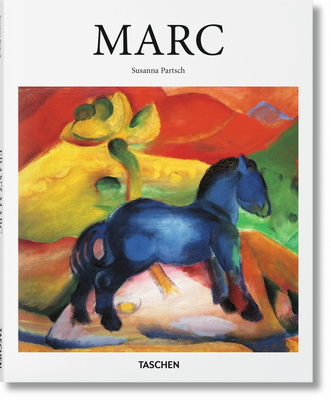
Printmaker, landscape painter, and cofounder of Der Blaue Reiter ("The Blue Rider"), Franz Marc (1880-1916) left an exceptional legacy in German Expressionism. His work absorbed influences including Paul Gauguin, van Gogh, Picasso, Henri Matisse, and Robert Delaunay to galvanize a new vocabulary of form and color.
Especially keen on depictions of animals, Marc's work began emphasizing cubist, semiabstracted shapes; frenetic, whirling compositions; and in his paintings, a new vocabulary of color. Marc located spiritual values in different shades. Blue was spirituality and masculinity. Yellow depicted femininity and joy. Red hues correlated to anger and violence.
It was with his friend and peer Wassily Kandinsky that Marc founded Der Blaue Reiter, a loose band of artists connected by a shared interest in woodcuts and prints, the symbolic values of color, and spontaneous approaches to painting. The group was short-lived, dissolving with the onset of the First World War--which would also claim Marc's life in 1916--but it set an Expressionist standard that would flourish for decades.
In this new edition in TASCHEN's popular Basic Art series, we meet this pivotal figure of German art and explore his short but hugely accomplished career, which at once defined an era and set an enduring point of Expressionist reference.
member goods
listens & views

MUSIK BRINGT FREUNDSCHAFT (EP)
by STEFAN,NICOLAS / POTZKOTEN,JURGEN
12-INCH SINGLEout of stock
$9.99






